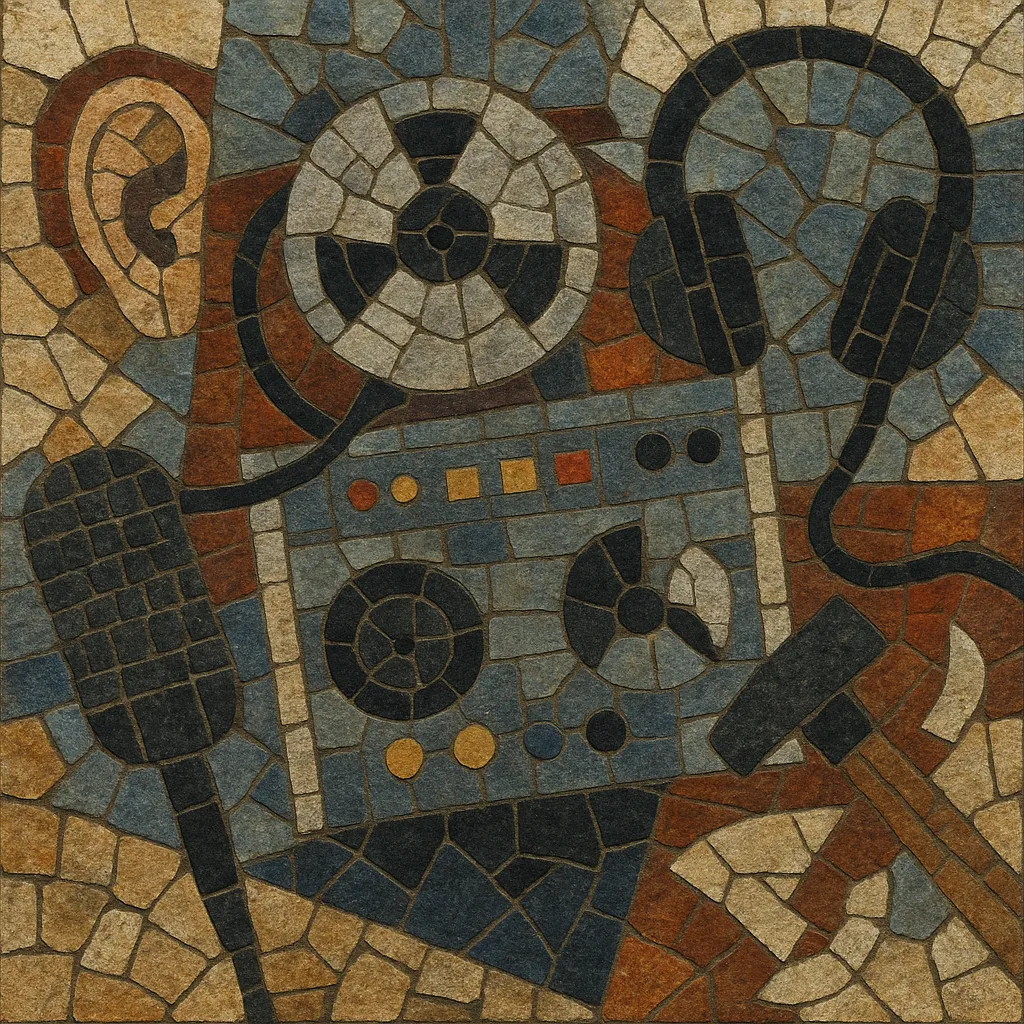Musique concrète is an electroacoustic approach to composition that uses recorded real‑world sounds (objets sonores) as primary material rather than traditional instruments or notation. Composers edit, splice, loop, reverse, time‑stretch, filter, and otherwise transform these recordings to create works designed for loudspeakers.
Emerging in late‑1940s France, it introduced acousmatic listening—focusing on the sound itself, detached from its source—along with a morphology‑based vocabulary of gesture, texture, and timbre. Historically realized on tape and now on digital audio workstations, musique concrète privileges montage and transformation over conventional harmony and meter, inviting listeners into a rich, tactile world of sonic phenomena.
Pierre Schaeffer, working at French radio (Studio d’Essai), pioneered musique concrète in 1948 with Étude aux chemins de fer, assembling train sounds on discs and later tape. His concept of the objet sonore and reduced listening (écoute réduite) reframed composition around sound’s intrinsic qualities rather than instrumental cause.
With Pierre Henry, Schaeffer created milestone works such as Symphonie pour un homme seul (1950). In 1951 he founded the Groupe de Recherches de Musique Concrète (later INA‑GRM), which became a hub for tools, pedagogy, and aesthetics. In parallel, studios in Cologne advanced Elektronische Musik (sine‑tone synthesis). Dialogues and cross‑pollination followed, culminating in hybrid tape works such as Edgard Varèse’s Poème électronique (1958).
Luc Ferrari (Presque rien), Bernard Parmegiani (De natura sonorum), and François Bayle (who coined and elaborated the acousmatic ideal) expanded the idiom toward narrative, environmental, and abstract morphologies. GRM introduced the Acousmonium (1974), a loudspeaker orchestra for spatial diffusion, placing performance focus on placement, dynamics, and gesture in space.
Digital sampling and DAWs streamlined tape‑era techniques—splicing became editing, varispeed became time‑stretching, and modular workflows broadened. The practice informed electroacoustic composition globally and seeded techniques central to plunderphonics, sound art, glitch, ambient, and aspects of industrial and experimental electronic music, while GRM’s tools and pedagogy continued to shape the field.
Record everyday sounds (mechanical, environmental, vocal) with high‑quality microphones; consider contact mics and hydrophones for unusual textures. Curate materials with distinctive transients, spectra, and envelopes.
Use a DAW (or tape for historical methods) to cut, splice, loop, reverse, and layer. Apply EQ, filtering, time‑stretch, pitch‑shift, convolution, granulation, and dynamics processing. Aim to reveal or transform intrinsic qualities of the sounds (reduced listening).
Compose via montage and transformation rather than chord progressions or steady meter. Organize by gesture, contrast, and morphological evolution (attack/decay, density, spectral brightness). Use silence and negative space as structural components.
Mix with spatial intent: stereo imaging, multi‑channel layouts, or ambisonics. In performance, treat the piece as fixed‑media, projecting and sculpting it across a loudspeaker array (acousmatic diffusion) with dynamic balance and spatial motion.
Prioritize timbre, texture, and narrative implication over lyrics or traditional melody. When using identifiable sources (voices, broadcasts), consider consent, context, and rights; anonymize or transform where appropriate.


